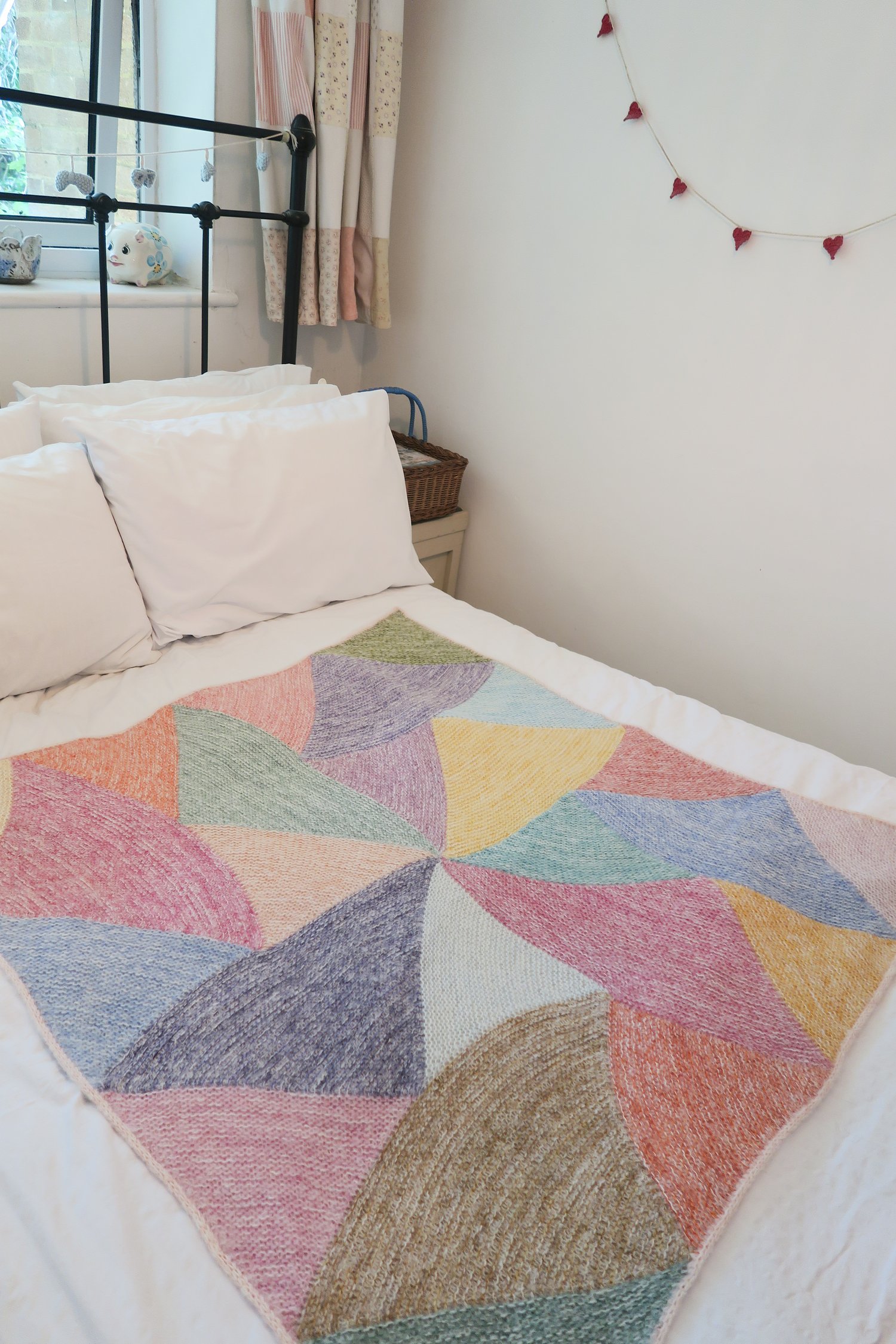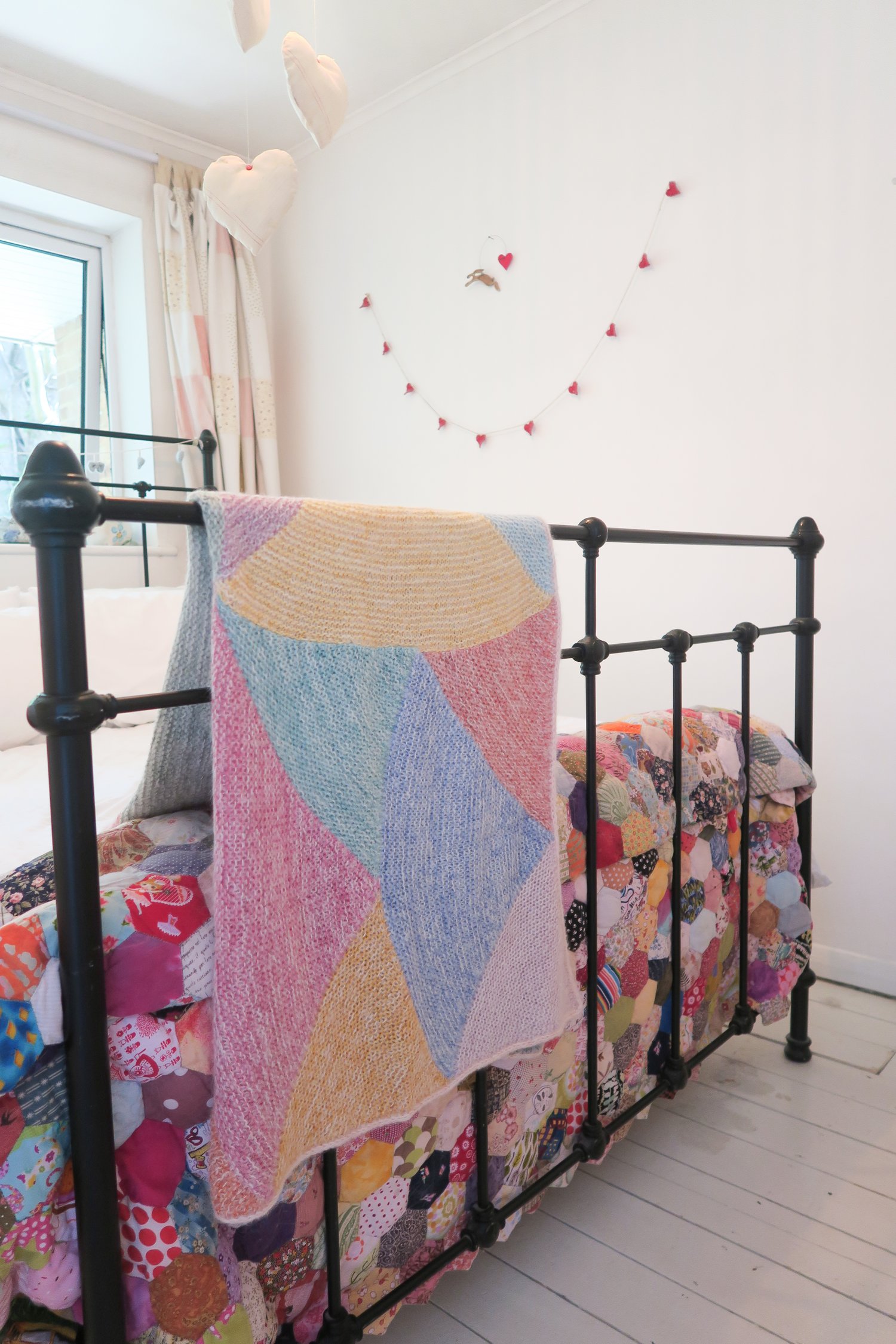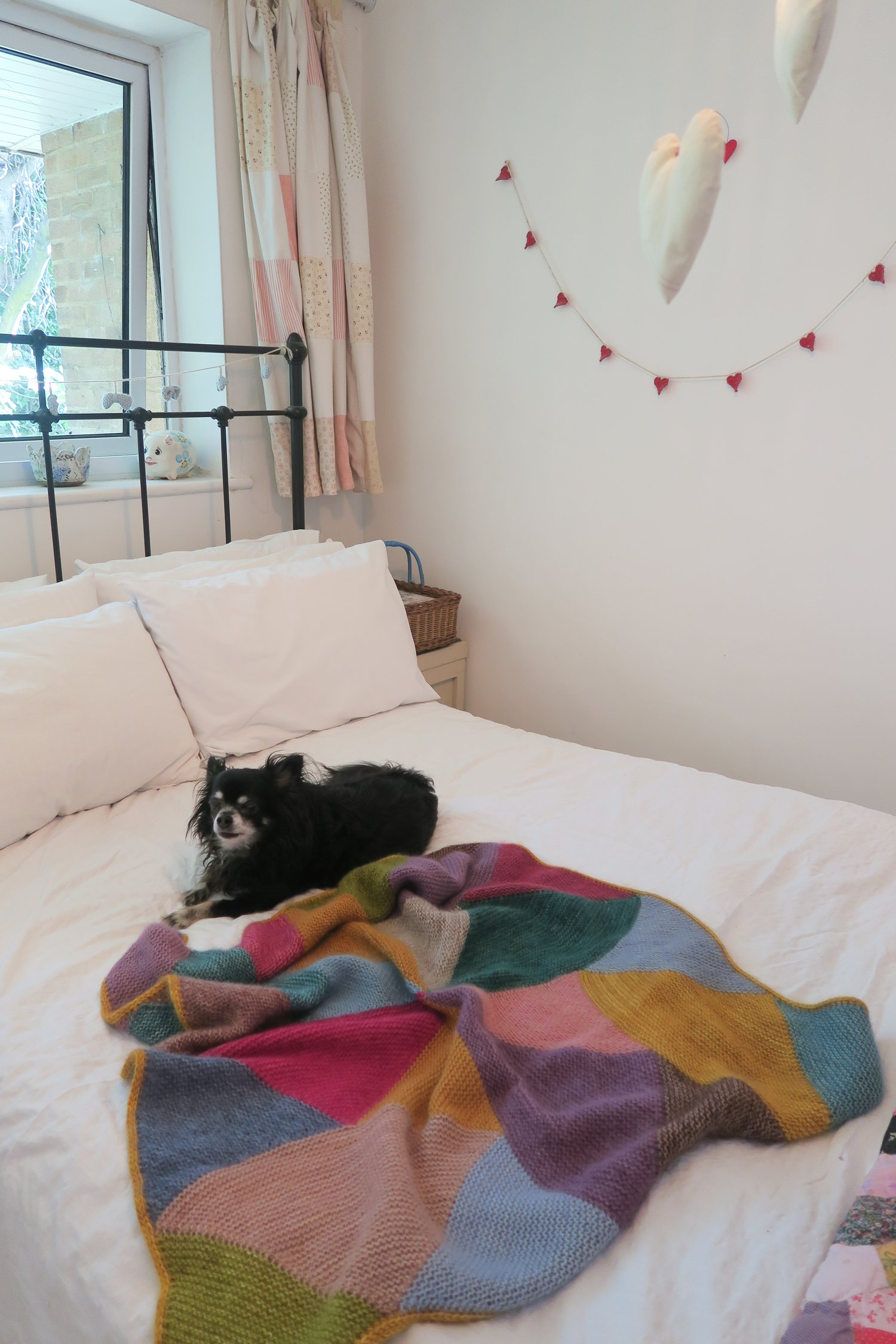Goose Eggs Throw
Each patch sparks a memory,
Each memory a feeling,
Each feeling brings warmth and a nurturing healing.
For our bodies and souls,
Our health and our spirit,
A feeling of home wherever wrapped in it.
The Goose Eggs Throw is a modular pattern inspired by cosy quilts and the beloved Biscuit, Buttons and Pickles series of books by E. J. Taylor from my childhood. You will work one shape at a time, knitting each triangle onto another to complete your throw. My favourite part is that you never have too many stitches on the needle and are using very simple stitches, but the outcome is a beautifully intricate looking throw. With an easy to memorise pattern I hope you find this project as meditative and soothing as I do.
Finished Measurements
When knit to gauge and blocked, the throw measures approximately 39”/98cm square. Final size will vary depending on how aggressively you block your work.
Gauge
16 sts x 36 rows per 4 inches/10 centimetres worked flat in garter sitch with fingering weight and mohair/alpaca fluff held together and blocked.
Yarn
You will need 270g of fingering weight yarn in various colours, I used 25 different colours and 130g of mohair or lace weight alpaca fluff. The fingering weight yarn and mohair/ alpaca fluff will be held double throughout.
If you follow the same colour order that I did in my sample the yarn requirements will be as follows:
For the larger triangles, triangle A you will need 8 x 20g of fingering weight yarn in various colours.
For the smaller triangles, triangle B, you will need 16 x 10g of fingering weight yarn in various colours.
For the border you will need 14g of fingering weight yarn.
You will be holding your yarn double with a mohair or alpaca fluff throughout and you will need 130g of this.
I used a specially designed yarn pack from Lay Family Yarn called the Goose Eggs Throw Kit.
Needles
4.5mm needles, or size needed to obtain gauge.
5mm needles or one size above your gauge needle for the border.
Notions
A locking stitch marker can be useful when you begin your first triangle to mark the right side.
Darning needle to sew in your ends






